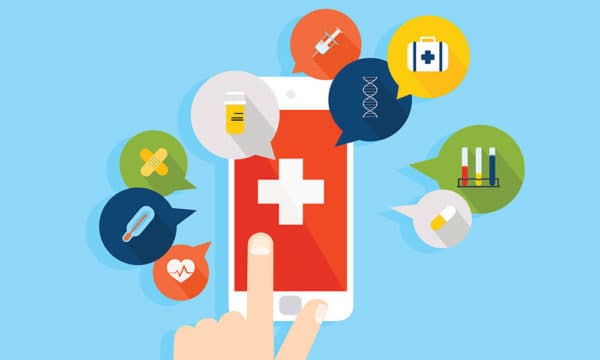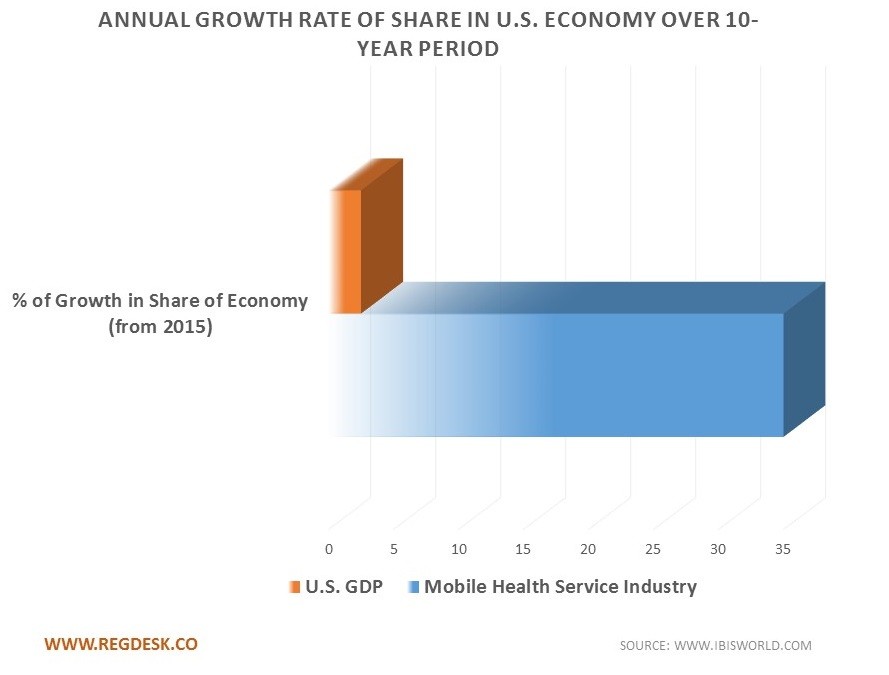The U.S. Mobile Health industry is growing at a rapid rate due to numerous technological advancements. Our chart compares the industry’s annual growth rate to that of the country’s gross domestic product (GDP) over the same 10-year period. IBISWorld notes that the Mobile Health Services industry’s value added, or overall revenue contribution to the U.S. economy, is growing at an annual rate of 35% leading up to 2020 while the U.S. GDP’s annual rate only amounts to 2.5%.
IBISWorld credits three factors to the industry’s high growth rate:
- Industry value added is expected to grow at a much higher rate than the overall economy
- Technological innovation is underpinning growth in the Telehealth Services industry
- Industry employment and establishment growth is occurring are a rapid pace
In 2015, Pew Research noted that nearly two-thirds of Americans own a smartphone and 62% of them use their device to retrieve health information. Wearable technology is also on the rise, being used to track sleep patterns, caloric intake, and fitness levels. These devices put patients’ health in their own hands.
The pros of mobile health and telemedicine range from the reduction of costs associated with unnecessary hospitalizations to store-and-forward technologies used to transmit digital images. These technological advancements allow for the expansion of healthcare into more rural or underdeveloped areas.


